Osceola Turkeys of Kennedy Space Center
Mini-disclaimer: This page has nothing to do with "pet" turkeys but rather the startling comeback of the Florida Wild Turkey to America's Space Port
I saw these two toms in the Parking lot of the Space Station Processing Building. I pulled over take their photo and they disappeared until I realized they were fighting with their refection in the Chrome bumper. Still they cooperated when I called out "Turkey-turkey" and came looking for snacks.
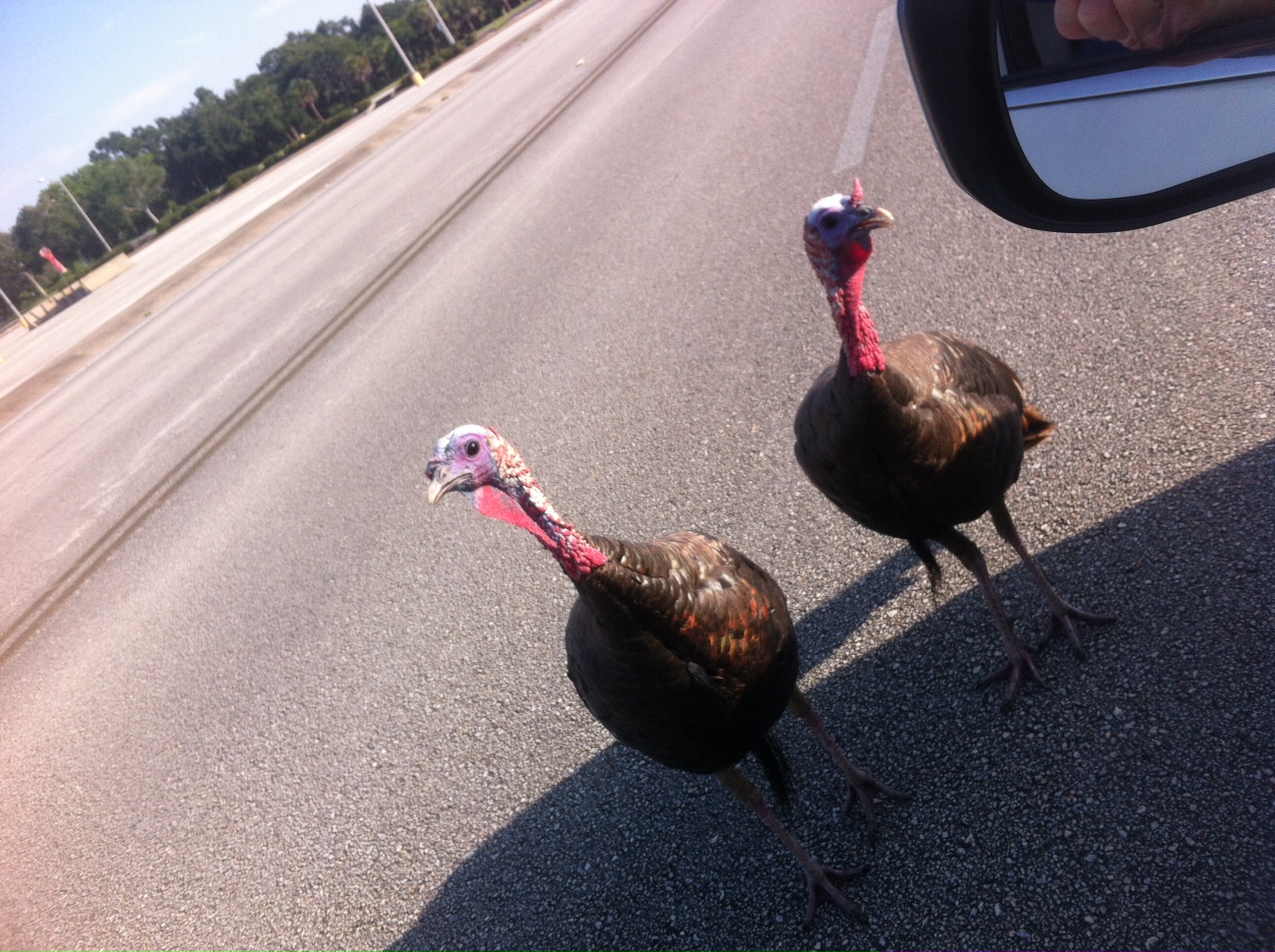
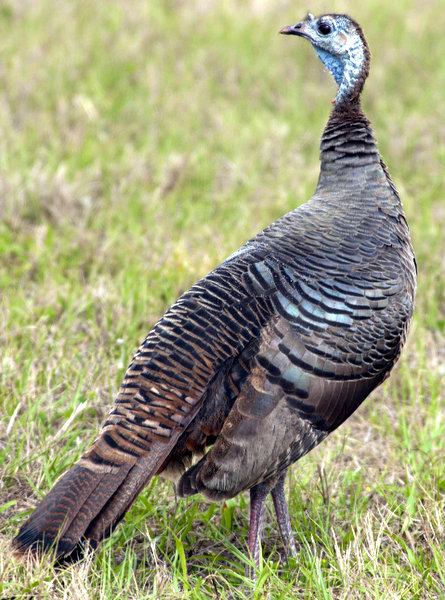
Proud Space Center hen Photo Credit: NASA
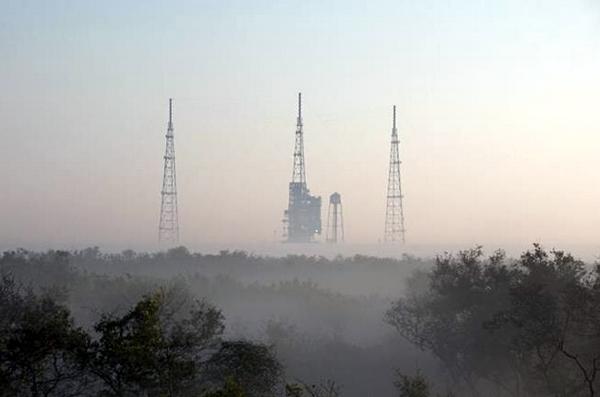
Photo credit NASA
Launch Pad 39B in the morning Fog

Kennedy Space Center is set on Merritt Island Wildlife Refuge- home of the Space Shuttles, Apollo Moon rockets, SpaceX, future Mars missions and Osceola Florida Turkeys!
Sharing the launch pads are 65 amphibian and reptile species, 330 native and migratory bird species, 25 mammal and 117 fish species. (and the occasional errant Savanah Monitor lizard)
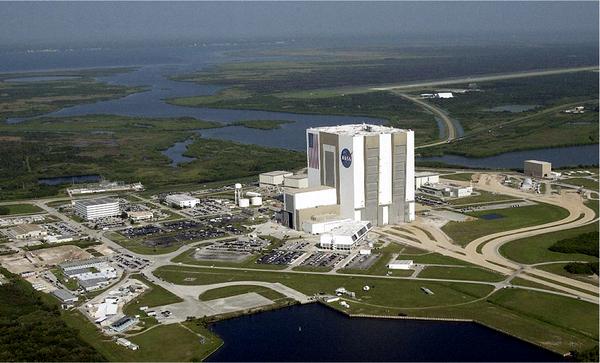
Vehicle Assembly Building (VAB) in the LC39 area.
Photo credit NASA
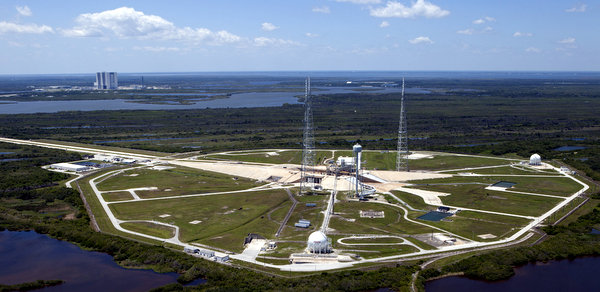
Launch Pad 39B (VAB in the background)
Photo credit NASA
Well if you have made it this far, into Turkey land......you might be interested in my observations of the return of the Florida Wild turkey to America's Space port.
The space center-a trophy of man's tentative step to the stars is surrounded by primeval Florida wilderness and an isolated Atlantic sea-shore. Tour buses from the Kennedy Visitor Center spend much of their time focused on the eagles, scrub-jays, sea turtle nests and alligators in between the fascinating vistas of launch pads and rocket launches: https://www.nasa.gov/launchschedule/
(and the occasional cautious Osceola Turkey)
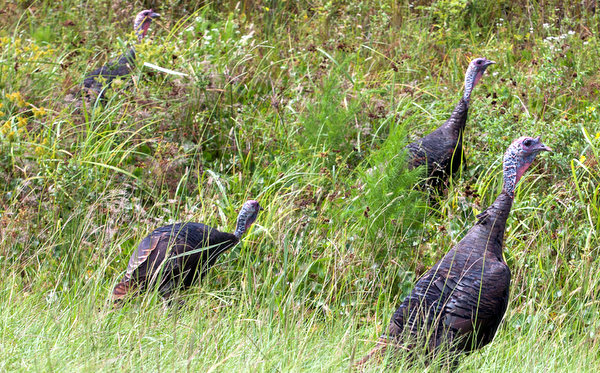
In the tall grass: Osceola hens on KSC

Merritt Island Wildlife Refuge https://www.fws.gov/refuge/Merritt_Island/ is comprised of the 140,000 acres of land, water, and marshes (swamps) surrounding the Space Center -The jewel of Florida's east coast the refuge attracts fishermen, bird watchers and space junkies.
https://www.fws.gov/refuge/Merritt_Island/wildlife_and_habitat/FLScrubJay.html
https://en.wikipedia.org/wiki/Merritt_Island_National_Wildlife_Refuge

Proud Tom
The Osceola Florida Turkey description http://www.grandslamnetwork.com/osceola/
Really interesting distribution map of the Florida Osceola Turkey: http://atoll.floridamarine.org/FLWildTurkeyModels/
Note: on the state's map, Kennedy Space Center is listed as "Not enough information" and so I am attempting to fill in some of that missing information.
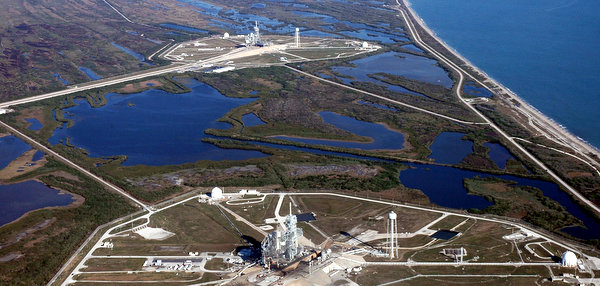
Pads 39A & B Photo credit NASA
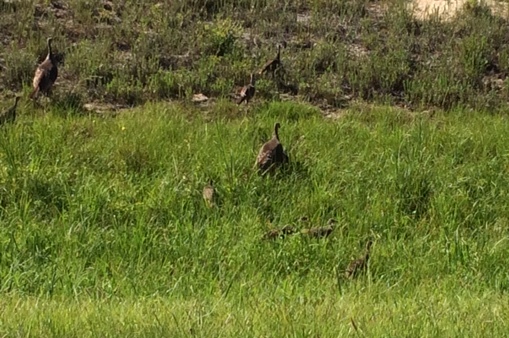
The Space Center:
True more alligators to be seen than turkeys, but the wild turkeys have spreading across the center and Cape Canaveral Air Force Station.

View between Launch Pads A & B.
(I took this picture just before the Pad B structure was demolished when the Space Shuttle program ended)
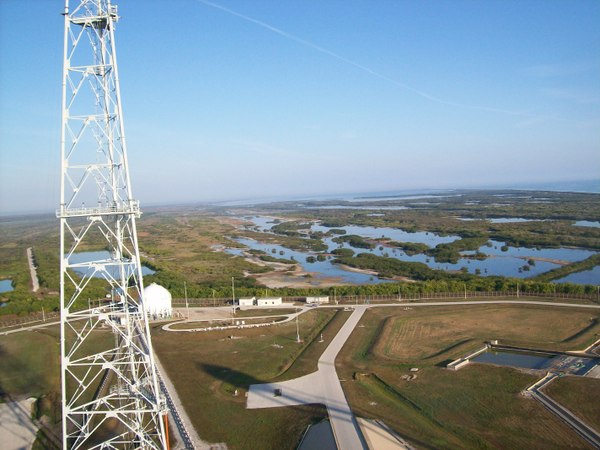
Launch Pad 39B looking north towards Mosquito Lagoon (source of wild turkeys)
I took the photo from the top of the pad
Kennedy Space Center and Merritt Island Wildlife Refuge are located on a large island bordered by the Banana River & Indian Rivers, Mosquito Lagoon (well deserved name) and the Atlantic coast. For security purposes many of the water areas are off limits or are "NO Motor Zones"-Kayak, canoes and sailboats only. The no motor zone is often affectionately known as "Jurassic Park"- not for the enormous American Alligators that inhabit the area but for the excellent tarpon and Redfish available for those willing to put in a two hour paddle.
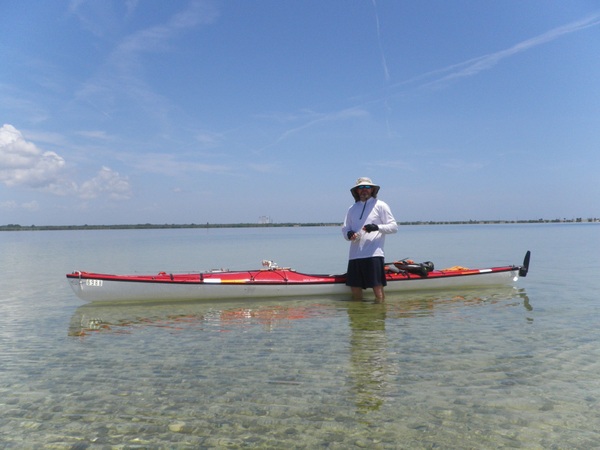
Banana River "No Motor Zone" South boundary of KSC
-shameless self portrait of me and my favorite kayak, a QCC-700
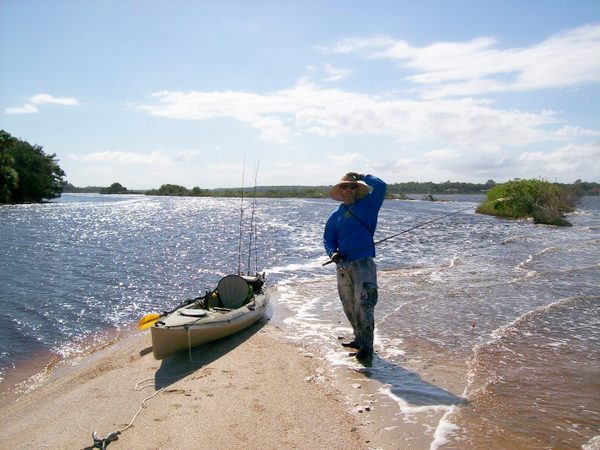
Shameless self portrait of the northern end of Kennedy Space Center (Windy day)
Interested in kayaking Kennedy Space Center?
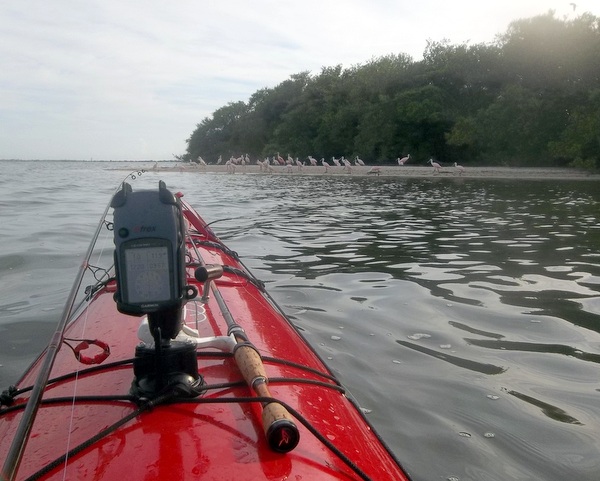
Flock of Roseate Spoonbills on the Banana River, KSC
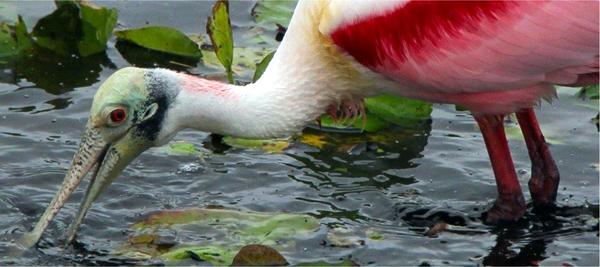
The Spoonbill is found across the refuge.
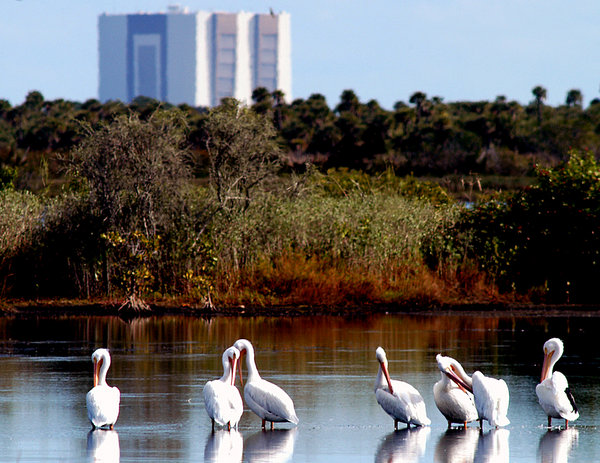
These White Pelicans are mostly winter visitors to KSC Photo credit NASA
Back to the Osceola Turkeys
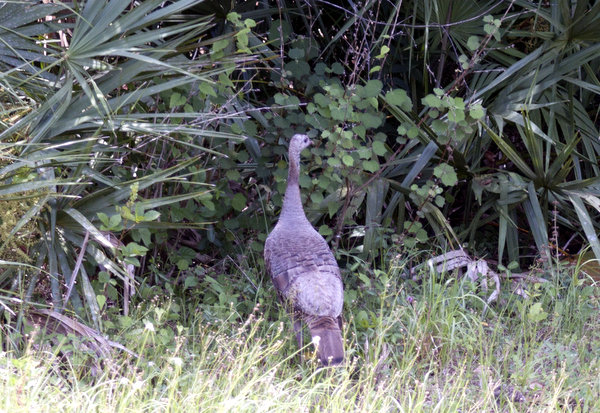
Palmetto bushes on the center are a mixed blessing, offering quick shelter but easily hides bobcats
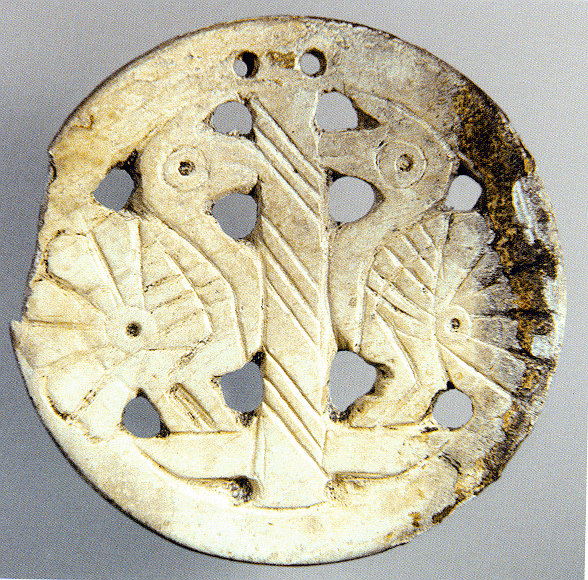
Native American, South east shell gorget of Turkey Toms doing what they do normally-fighting for the hens
Turkey fossils have been dated in Florida back to around 24 million years ago and they are well represented in Native American Art. However like turkeys across America, the birds were overhunted and in Florida, the Osceola only survived in the remotest of swamps.
Since the formation of the refuge and amazing conservation efforts, the Osceola turkeys have been spreading from the remote oak hammocks north of the space center, through the palmetto parries and marshes of the middle refuge and pioneering in the pine and oaks of the southern part of Kennedy Space Center. And even a new colony has spread to the adjoining Cape Canaveral Air Force Station.
The key to the success of the Space Center turkey has been the Forest Service use of controlled burning. "Doing what lightning will anyway if prolonged"
The new grass shoots resulting from the burns provide fresh feed and pathways through the dense saw palmettos bushes that had formed a natural barrier.

A small controlled burn
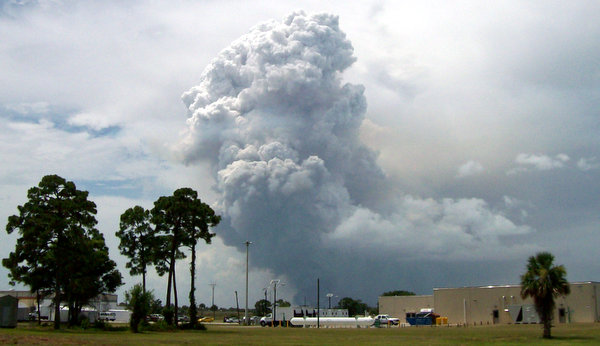
Larger controlled burn
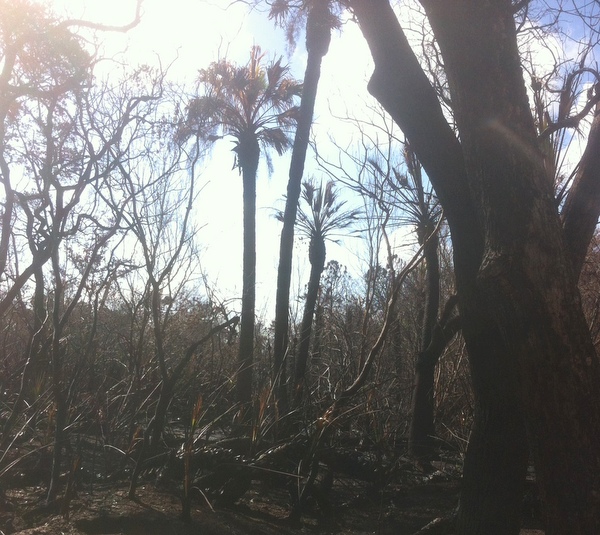
The aftermath of the controlled burn
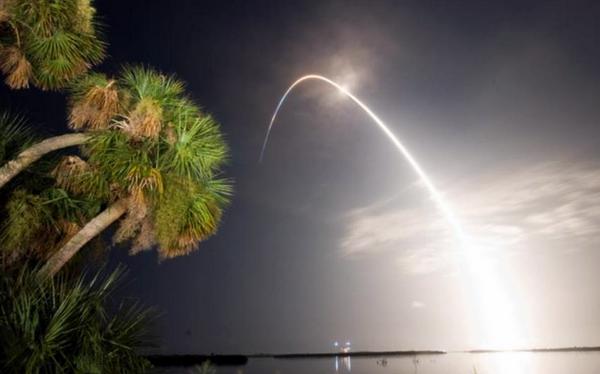
The other type of controlled burn on the space center, a night rocket launch and well worth the kayak paddle. Photo credit NASA
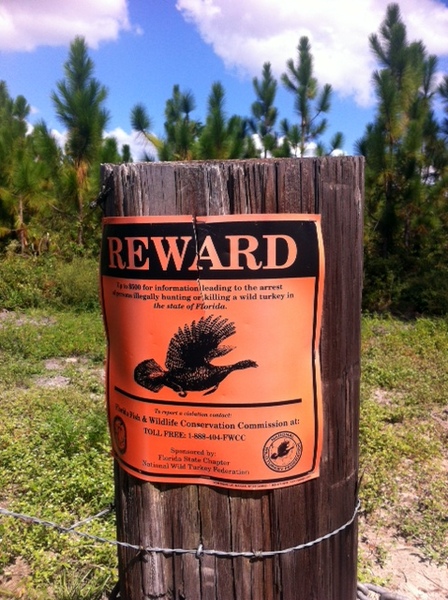
And of course no hunting these beautiful birds on the refuge.

Tom showing off for the Space Center visitors

Next generation of Kennedy Space Center residents who have their own unique challenges as seen in the photo below.
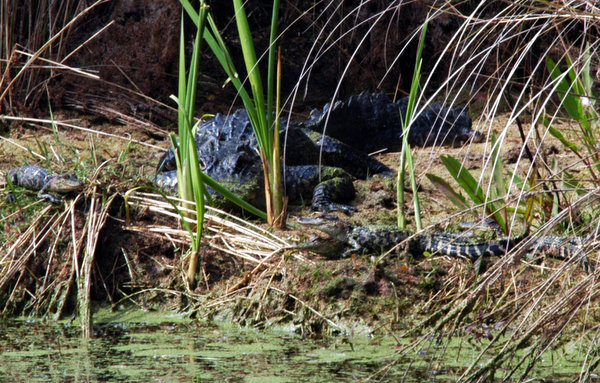
Kayaking around the center and refuge, can be......interesting
Plans for the future of Kennedy Space Center https://www.nasa.gov/sites/default/files/atoms/files/cpd_frontpage_summer2017_508.pdf
A guarantee that the turkeys and other wildlife will co-exist with the space program.

Another day on the Space Center & turkeys in the road.
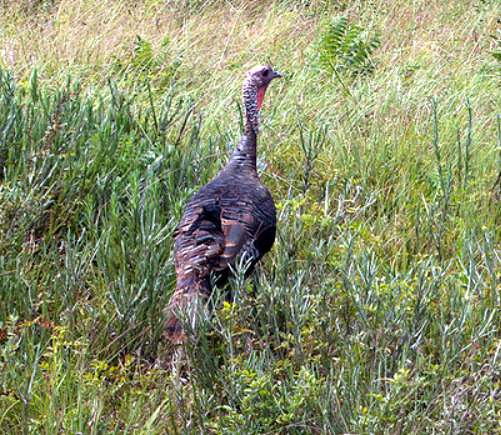

1933 "Pre Space Center" map shows north Merritt Island surrounded by the shallow brackish waters of Mosquito Lagoon, the Indian and Banana Rivers. And to the east the Atlantic.
Banana Creek cuts across the island however the channel was sealed to create the crawlerway for the Apollo program.
Coyotes, turkeys and the occasional black bear have to cross the narrow isthmus at the northern end to reach the wilds of Kennedy Space Center.
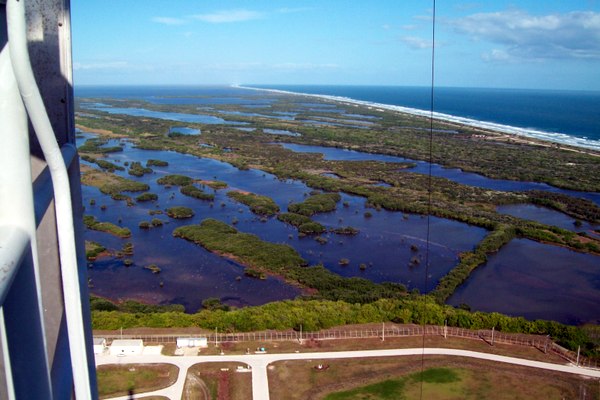
Looking north from Launch Pad B, to Mosquito Lagoon.
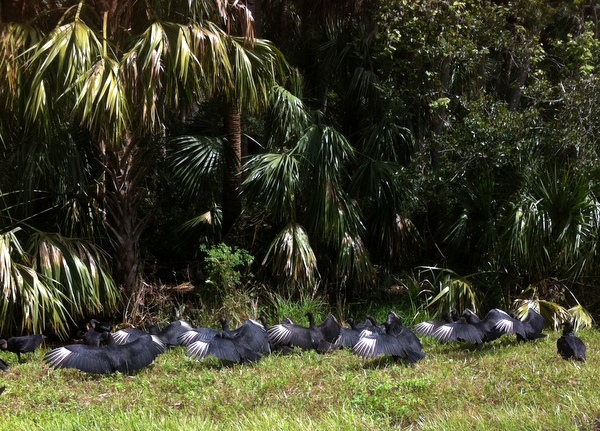
Black buzzards sunning themselves (not turkeys)
Newest Photo......

Had a work order at the Shuttle Runway/Air Traffic Control Tower, came around the bend to see a flock of turkeys in front of a Space Shuttle and Nascar cars testing speed on the runway.
(only had my phone camera)
So this is a shuttle replica, the real shuttles have long since been placed in museums.

Return Home from Osceola Turkeys of Kennedy-Space-Center
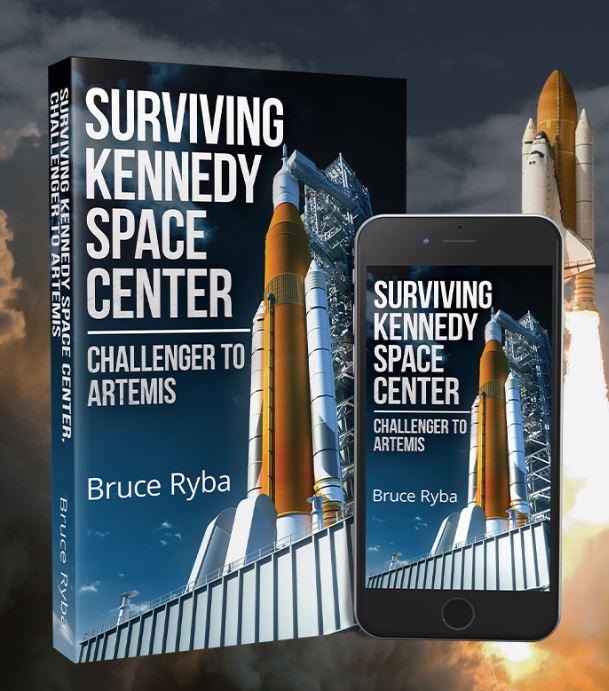
My next book "Surviving Kennedy Space Center" available on Amazon, September 16, 2025
Peek behind the curtains of the space center
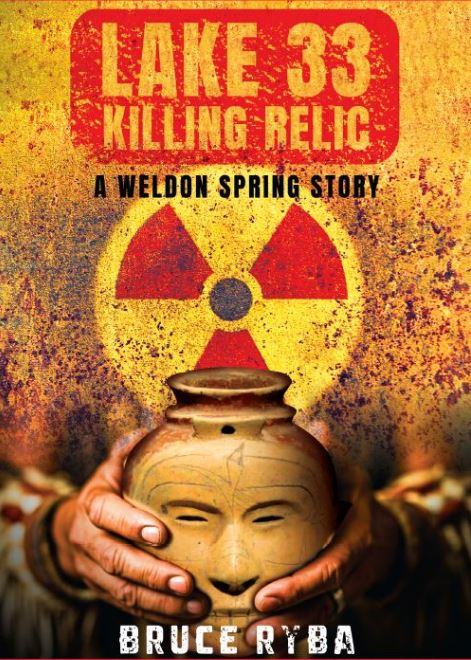
Lake 33 Killing Relic (navigates to my other web site)
Eastern Missouri, a little radioactive waste and a possible ghost, what could go wrong?
Do you need the perfect gift?
For pet lovers around the globe, "It's a Matter of Luck" is a collection of heart warming stories of horse rescues from the slaughterhouse.
Available on Amazon:
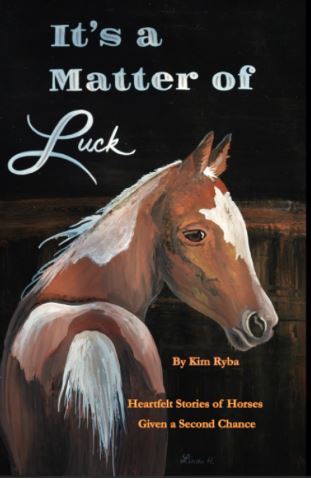
It's a Matter of Luck: Inspirational, Heartfelt Stories of Horses Given a Second Chance.
by Kim Ryba & Lina T. Lindgren
Warning: This book may cause your eyes to water -in a good way. (speaking from experience after reading it)
Please give Kim and Lina a heartfelt review on Amazon!
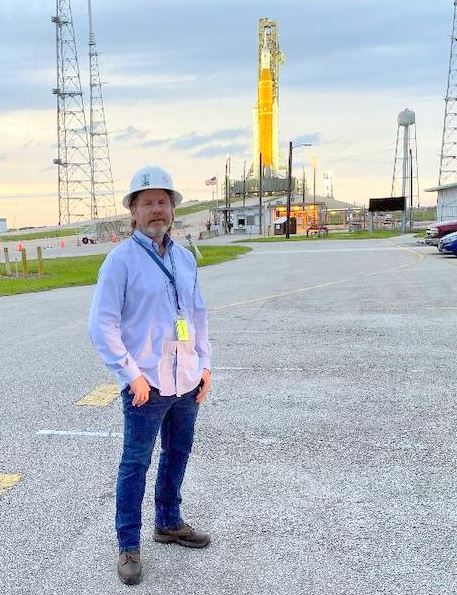
Author Bruce Ryba at Kennedy Space Center Launch Pad 39B & Artemis 1. "We are going to the Moon!"
Author's discussion (that's me) on You Tube of a book review on Amazon
My Facebook page Pet Turkeys You can always check in and say hello!
For the video versions of information, please check out my YouTube Channel (Turkeys, KSC, Flintknapping, dive stories etc.)
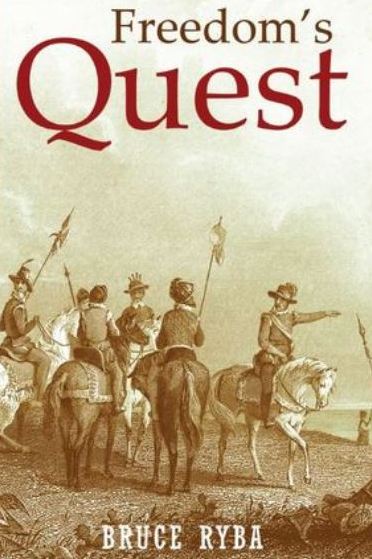
Book One of Florida History:
Freedoms Quest Struggle for the Northern Frontier and lost tales of old Florida
Fiction & language warning.
Available on Amazon
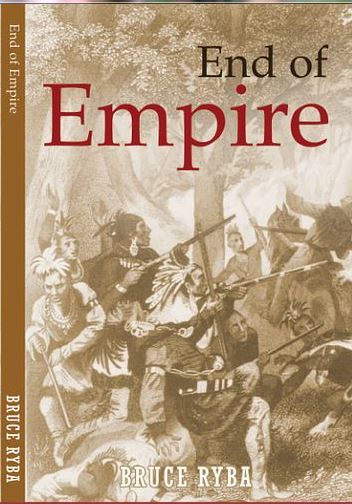
Desperate times call for bold action.
In a desperate move to retain Florida and protect the treasure-laden galleons on their dangerous return journey to Europe, the King of Spain issues a royal decree offering refuge to all English slaves who escape Florida and pick up a musket to defend the coquina walls of Saint Augustine.
In another bold gamble, the King offers refuge to the dissatisfied Indian nations of the southeast who will take up arms against the English.
Clans, traumatized by war and disease, cross the Spanish Frontier to settle the cattle-rich land and burned missions of Florida.
Follow the descendants of the conquistador Louis Castillo in remote Spanish Florida, a wildland swept by diseases, hurricanes, and northern invasions.
Book Two: Available on Amazon

